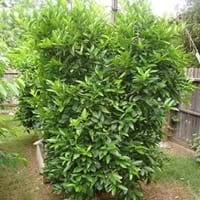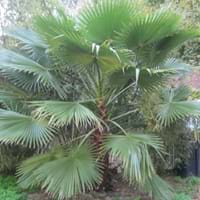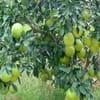Life Span
Perennial
Perennial
Origin
Southeastern Asia
United States, Southeastern United States
Types
not available
Not Available
Number of Varieties
Not Available
Habitat
Temperate Regions
Coastal sand dunes, Dry areas, moist forests, Wet lands
USDA Hardiness Zone
10-11
8-12
Sunset Zone
H1, H2, 8, 9, 12, 13, 14, 15, 16, 17, 18, 19, 20, 21, 22, 23, 24
H1, H2, 7, 8, 9, 10, 11, 12, 14, 15, 16, 17, 18, 20, 21, 22, 23, 24
Habit
Oval or Rounded
Clump-Forming
Flower Color Modifier
Bicolor
Bicolor
Fruit Color
Green, Yellow green
Black
Leaf Color in Spring
Green, Light Green
Light Green, Blue Green, Gray Green
Leaf Color in Summer
Green, Light Green
Green, Blue Green, Gray Green, Silver
Leaf Color in Fall
Green, Light Green
Blue Green, Gray Green
Leaf Color in Winter
Light Green
Blue Green, Olive, Gray Green
Plant Season
Spring, Summer, Fall, Winter
Spring, Summer, Fall, Winter
Sunlight
Full Sun, Partial Sun
Full Sun, Partial Sun, Partial shade
Type of Soil
Loam
Clay, Loam, Sand
The pH of Soil
Acidic, Neutral
Acidic, Neutral, Alkaline
Soil Drainage
Well drained
Well drained
Bloom Time
Indeterminate
Spring, Late Spring
Tolerances
Drought
Wet Site, Pollution, Salt, Soil Compaction
Where to Plant?
Container, Ground, Pot
Container, Ground
How to Plant?
Seedlings, Transplanting
Seedlings
Plant Maintenance
Medium
Medium
Watering Requirements
Do Not over Water, Requires regular watering
Drought Tolerant, occasional watering once established
In Summer
Lots of watering
Lots of watering
In Spring
Moderate
Moderate
In Winter
Average Water
Average Water
Soil pH
Acidic, Neutral
Acidic, Neutral, Alkaline
Soil Type
Loam
Clay, Loam, Sand
Soil Drainage Capacity
Well drained
Well drained
Sun Exposure
Full Sun, Partial Sun
Full Sun, Partial Sun, Partial shade
Pruning
Prune in summer, Remove damaged leaves
Remove damaged leaves, Remove dead branches, Remove dead leaves
Fertilizers
All-Purpose Liquid Fertilizer
All-Purpose Liquid Fertilizer
Pests and Diseases
Aphids, Mites, White outside
Birds
Plant Tolerance
Drought
Drought
Flowers
Insignificant
Insignificant
Flower Petal Number
Single
Single
Foliage Texture
Medium
Coarse
Foliage Sheen
Glossy
Matte
Attracts
Birds, Butterflies
Birds
Allergy
Dental erosion
gas, Heartburn, Nausea, Stomach pain, Vomiting
Aesthetic Uses
Not Used For Aesthetic Purpose
Unknown
Beauty Benefits
Not Available
Not Available
Environmental Uses
Air purification
Air purification
Medicinal Uses
Not Available
chest congestion, Cough, Digestion problems, Inflammation, Sedative, Thyroid problems, Urinary problems
Part of Plant Used
Fruits
Fruits
Other Uses
Used As Food, Used in making beverages
Paper pulp, Used in herbal medicines
Used As Indoor Plant
Yes
No
Used As Outdoor Plant
Yes
Yes
Garden Design
Container, Edible, Fruit / Fruit Tree, Topiary / Bonsai / Espalier, Tropical
Container, Feature Plant, Foundation, Mixed Border, Rock Garden / Wall, Tropical
Botanical Name
CITRUS aurantiifolia 'Bearss'
SERENOA repens
Common Name
Bearss Lime, Shiraz Limoo, Tahiti Lime
Saw Palmetto
In Hindi
Shiraz Limoo
Serenoa
In German
Bearss Kalk
Sägepalme
In French
Bearss chaux
Serenoa repens
In Spanish
Bearss cal
Serenoa repens
In Greek
BEARSS ασβέστη
Serenoa
In Portuguese
Bearss cal
Serenoa repens
In Polish
bearss wapna
Serenoa
In Latin
bearss lime
Serenoa
Phylum
Not Available
Magnoliophyta
Class
Not Available
Liliopsida
Order
Sapindales
Arecales
Family
Rutaceae
Arecaceae
Genus
Citrus
Serenoa Hook. f.
Clade
Angiosperms, Eudicots, Rosids
Angiosperms, Commelinids, Monocots
Tribe
Not Available
Trifolieae
Subfamily
Not Available
Coryphoideae
Importance of Bearss Lime and Saw Palmetto
Want to have the most appropriate plant for your garden? You might want to know the importance of Bearss Lime and Saw Palmetto. Basically, these two plants vary in many aspects. Compare Bearss Lime and Saw Palmetto as they differ in many characteristics such as their life, care, benefits, facts, etc. Every gardener must at least have the slightest clue about the plants he wants to plant in his garden. Compare their benefits, which differ in many ways like facts and uses. The medicinal use of Bearss Lime is Not Available whereas of Saw Palmetto is chest congestion, Cough, Digestion problems, Inflammation, Sedative, Thyroid problems and Urinary problems. Bearss Lime has beauty benefits as follows: Not Available while Saw Palmetto has beauty benefits as follows: Not Available.
Compare Facts of Bearss Lime vs Saw Palmetto
How to choose the best garden plant for your garden depending upon its facts? Here garden plant comparison will help you to solve this query. Compare the facts of Bearss Lime vs Saw Palmetto and know which one to choose. As garden plants have benefits and other uses, allergy is also a major drawback of plants for some people. Allergic reactions of Bearss Lime are Dental erosion whereas of Saw Palmetto have gas, Heartburn, Nausea, Stomach pain and Vomiting respectively. Having a fruit bearing plant in your garden can be a plus point of your garden. Bearss Lime has showy fruits and Saw Palmetto has showy fruits. Also Bearss Lime is not flowering and Saw Palmetto is not flowering . You can compare Bearss Lime and Saw Palmetto facts and facts of other plants too.





